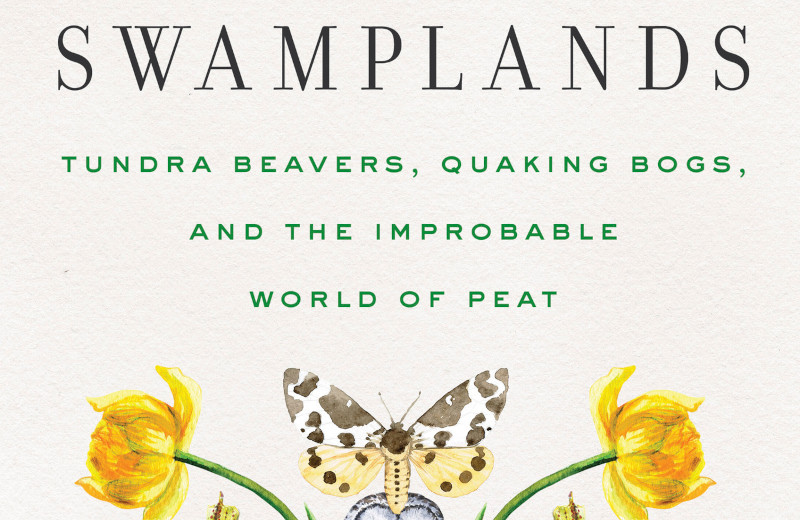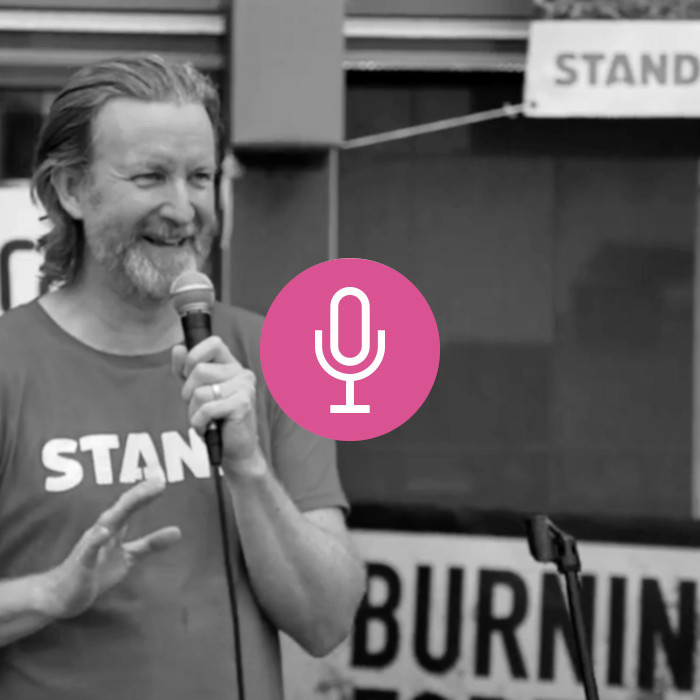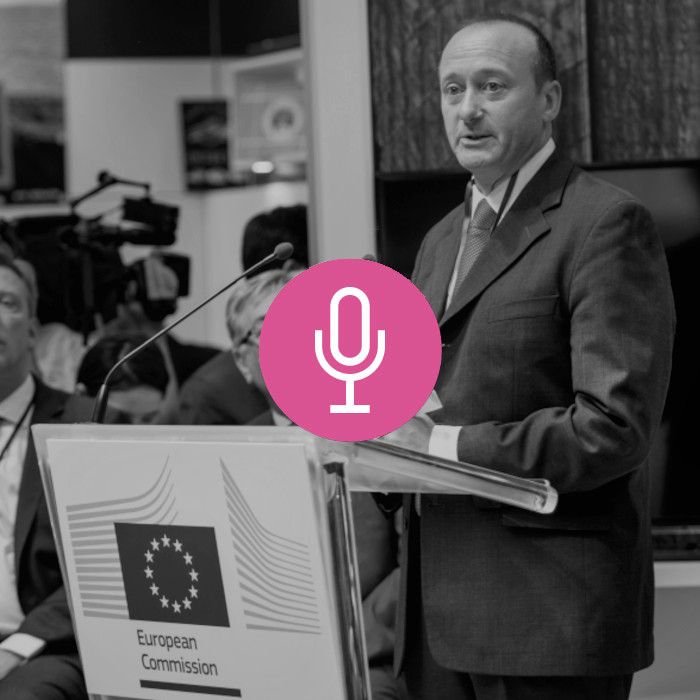Table of Contents
This weekend, delegates at COP26 will have the opportunity to take “virtual field trips” to peat bogs around the world by visiting the virtual Peatland Pavilion, a ring of screens circling pointed hollow domes in the UN-hosted Blue Zone. From there they can visit diverse locations from the Staroselsky Moch in Russia to blanket bogs in the Spanish Cantabrian Mountains.
It’s not the only project of its kind this year; there has also been a virtual trip to meet Bangladeshi farmers, a VR headset experience that allows delegates to view the carbon emissions of different buildings as they explore them, and a range of built environments showcased in the UK Green Building Council’s ‘Build Better Now’ virtual platform.
Yet the peatland trips stand out. Even in an age of helicopters and floating roads, many of the world’s peatlands have maintained their historic mystery and inaccessibility to the non-Indigenous visitor. Long dismissed by ruling cultures as valueless and hostile, the fens, bogs and mangroves that cover roughly 4% of the Earth’s surface remain largely unfamiliar environments not just to the public, but to scientific communities too.
That seems to be changing, as awareness grows of peat’s significance in addressing the climate crisis. That 4% of land cover stores 30% of all land-based carbon. That’s more than all other vegetation types in the world combined, or twice as much as all forest on Earth. When drained, carbon storage is no longer possible, and bogs change from carbon sinks to emitters. This is catalysed exponentially if or when they catch fire – drained peat is highly flammable and its depth below ground (often tens of feet) makes it very difficult to extinguish. Some major 20th century peat fires burned for years without stopping. A 2011 fire in Pocosin Lakes, North Carolina, carried on smouldering despite the efforts of 400 firefighters and the torrential rains that came with Hurricane Irene.
Not only that, but peat is essential in filtering and cleaning water supplies, providing havens for biodiversity, and preventing flooding. Holland, California, Louisiana, the Everglades, and other coastal locations around the world would not be as existentially threatened by rising sea levels if they’d protected their peatland.
Hopefully, as COP26 attendees follow flashing navigation marks on the floor and blue radars to “hop from dome to dome” in virtual bogs this weekend, the importance of peat will reach policymakers. It’s certainly an expansion from previous conferences; at COP25 there were only eight events in the Peat Programme, whereas in this month’s Peat Pavilion there are nearly 50.
50 events may sound exhaustive, but there is a lot to cover. Peatland – waterlogged areas of partially decomposed, oxygen-starved plant material – spreads over boreal, temperate, and tropical regions, with a huge diversity of ecosystems, and of types of peat itself. A researcher at the International Peatland Society has created a list of almost 7,000 peat-related terms. As Edward Struzik says, having travelled to peatland all over the world, from the Arctic to the Mojave Desert, “the thing that peatlands have all had in common is that they were and still are underappreciated.”
Struzik’s postcolonialism & The Great Dismal Swamp
For those not visiting Glasgow’s Peatland Pavilion, or who want a more holistic overview of the world of peat, Struzik’s Swamplands is a good place to start. Written as a series of essays based on his trips, sometimes alone in a canoe but often in dialogue with local experts, it’s filled with scientific surprises and a romantic passion for protecting biodiversity.
Swamplands’ unexpected strength, however, is as a socio-cultural, often postcolonial, analysis of human relationships with maligned landscapes and vilified fens. Readers looking for scientific (or even policy) insight won’t be disappointed; every few pages contain descriptions of animals, plants, and natural processes Struzik had not expected to witness or learn about, and the politically neglected climate impacts referenced above are explored in detail. Yet underpinning every recognition of societal ignorance around peat, or of the damage done already, is the burning question; why?
Struzik is refreshingly Saidian for a climate journalist in his view of the interconnectedness of culture, imperialism, politics, and science. When asked in an interview why swamplands have received relatively little attention as climate sinks or sanctuaries for biodiversity, he launched into a discussion of how poets and authors have historically demonised bogs, linking this cultural perspective to scientific mistakes in seeing them as sources of disease.
Excerpts from folklore, songs, and literature are scattered throughout his book as he subtly describes how European imperialism was not just a project of settlement and control, but of cultural export. Colonial violence (both physical and economic) is described not only against non-European human populations, but against their swamplands – and particularly fascinating are the stories of how persecuted populations found refuge in these supposedly inhabitable territories.
In doing so, he raises interesting historical questions as well as scientific ones. For example, just how many maroons (escaped slaves and their descendents) and Indigenous Americans lived in Virginia’s Great Dismal Swamp in the 18th and 19th centuries? What was their life like? What can we learn from them? Their numbers are believed to have been in the tens of thousands – but no academic field work had ever researched this until The Great Dismal Swamp Landscape Study began in 2002. Even after this, in 2003 an archaeological research group gave up on a project because they kept getting lost.
Drained by history
Struzik doesn’t write with the vocabulary of a postcolonial theorist. He recurrently describes new ‘discoveries’ – including plants such as “alulu (or ōlulu), the so-called cabbage on a stick (Brighamia insignus)” in Kauai in the Central Pacific, five species of songbird near Sulawesi, Indonesia, or even the very existence of the world’s largest tropical peatland, in the Republic of Congo. A sceptical reader might wonder the extent to which ‘first discovered’ in these contexts should be framed as ‘first discussed in peer-reviewed or institutionalised research’ – presumably local populations were already aware of much of this. Similar semantic criticisms could be made over his literary discussions – describing Caliban as “savage” could be contentious to postcolonial critics.
Pedantry aside, it’s not a bad thing that Struzik avoids writing with the language of an academic. His book has relevance to many disciplines – ecology, environmental science, cultural studies, anthropology, history, postcolonial studies – without ever getting bogged down in jargon or discussion of scholarship. Struzik’s writing is consistently descriptive and conversational, so that the reader feels as though they’re accompanying him and his interviewees through isolated landscapes , sharing his sense of wonder.
When quoting historical perspectives, he tries to maintain this experiential tone. Sometimes, this serves as sad reminders that authors have long been mourning the destruction of swamplands. For example, almost exactly a century ago, Charles Frederick Stansbury wrote that “the woodsman’s ax is slowly eating away to the shores of Lake Drummond…The swamp will be shorn of its tree growth, and where now beauty and interest abide at every step, only the blackened specters of dead trees will stand sentinel over its denuded and burned-over surfaces…like all things beautiful, it must pass away before the encroaching commercialism of the times.”
Elsewhere, Struzik shows how white naturalists viewed the biodiversity of these environments as a wild and untamed wilderness that threatened colonial extraction and production. Struzik portrays 18th Century renaissance man & slaveholder William Byrd as an ecologist irredeemably tainted by a sadistic personality embedded in settler-colonial ideology. Despite detailed observations about types of “spungy” ground, “12 feet high” reeds and the “treble, tenor and bass” tones of different wolves, Byrd concluded the Great Dismal was a “miserable morass where nothing can inhabit.”
Struzik describes Byrd’s analysis as “crafting an image of bleakness in the Great Dismal that evoked the most macabre of medieval superstitions about swamps and bogs being sources of poisonous vapors rising from rotting vegetation.” To ensure profit for the British colonial project, Byrd recommended draining The Great Dismal in entirety. According to Struzik, just 20% of the million acres of forested peatlands that existed before Byrd and his fellow surveyors mapped the region still remains.
Adapting for the future
Europeans, already neglecting or draining their own peatland, often presumed that dramatic land use change was the pathway to cultivating swampland for food production and other uses. This led to failure and a lack of food, when Indigenous communities had already learned how to cultivate crops and create a habitable home in peatland with minimal ecological disruption. On British explorer John Franklin’s second Arctic expedition in 1826, only nine out of twenty travellers survived, as starvation led them to eat their own boots, and each other. Nearby, “the Inuit were carving out a comfortable existence at places such as Kitigaaryuit, the name of a verdant peatland located on a spit jutting out from the East Channel of the Mackenzie River.”
This message of adaptation over land use change is key. Struzik states that Indigenous communities are the exception to landscape ecologist Eric W. Sanderson’s observation that “people fit the environment to what best suits them rather than adapting, as animals do, by taking advantage of features of the environment which best suit them.” As extreme weather events become increasingly common, and the global climate approaches terrifying tipping points, the emphasis of climate discourse will inevitably begin to shift away from Net Zero pledges and towards adaptation in future decades.
An implicit, unwritten message of Swamplands is that to do this effectively, the growing technocratic interest in peatlands as a piece in a policy puzzle is not enough. Minimising human suffering and ecological destruction as we move forward requires a much broader cultural change, and one that centers Traditional Ecological Knowledge.
We may no longer believe that swamplands are disease-ridden territories haunted by Jack-O-Lantern, but we have yet to stop the damage begun by people who did. If there were ever an appropriate time to confront this, it would be a climate conference in pandemic Britain, that began on Halloween.
Bertie is Assistant Editor at Land and Climate Review. He sits on the board of directors for development charity Oxford Omnia International, edits The Civil Society Review, and hosts The Climate Show for thepostman24. You can find him on twitter @bertrandhb.
Listen to the podcast:
- Podcast




